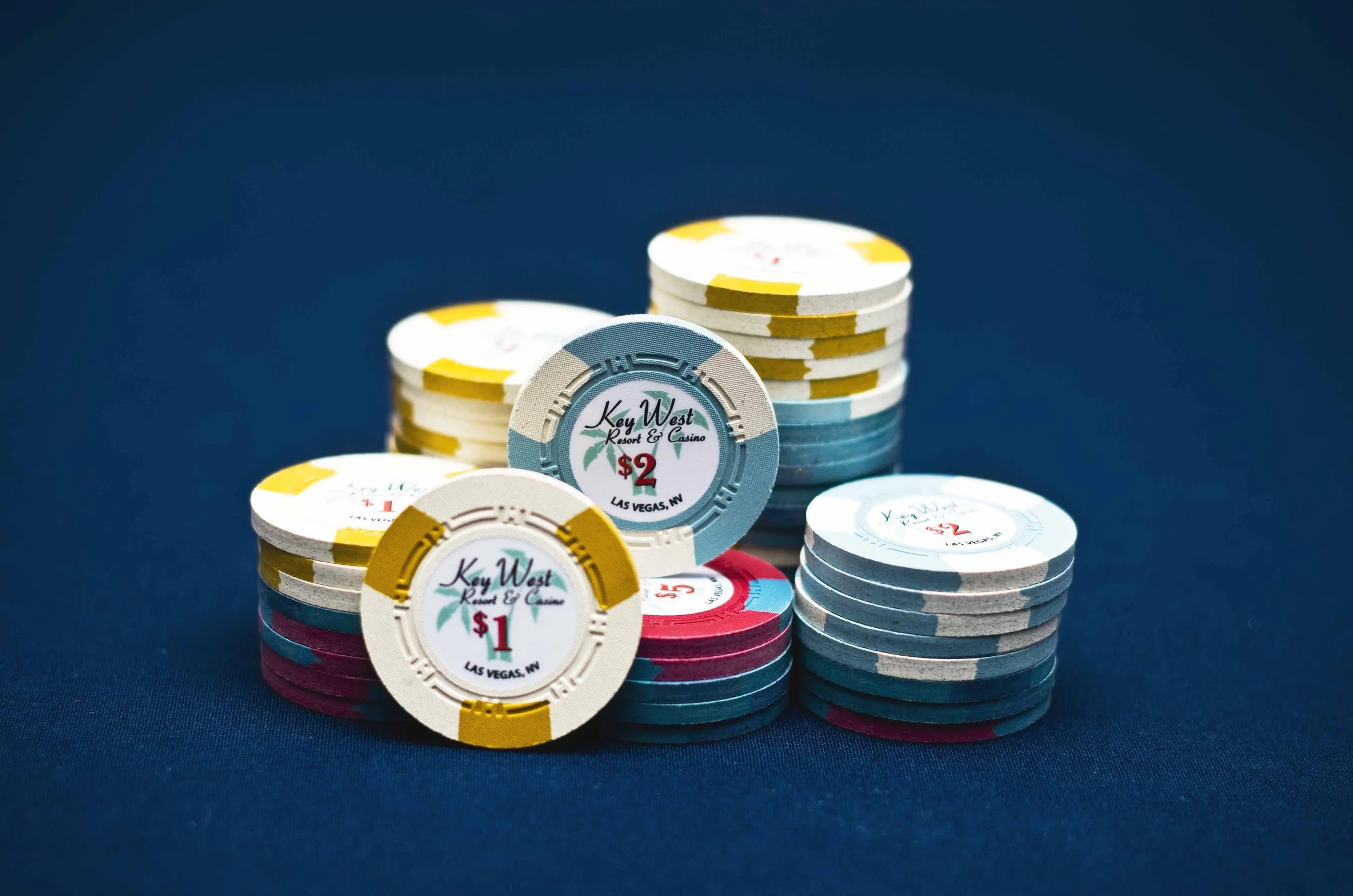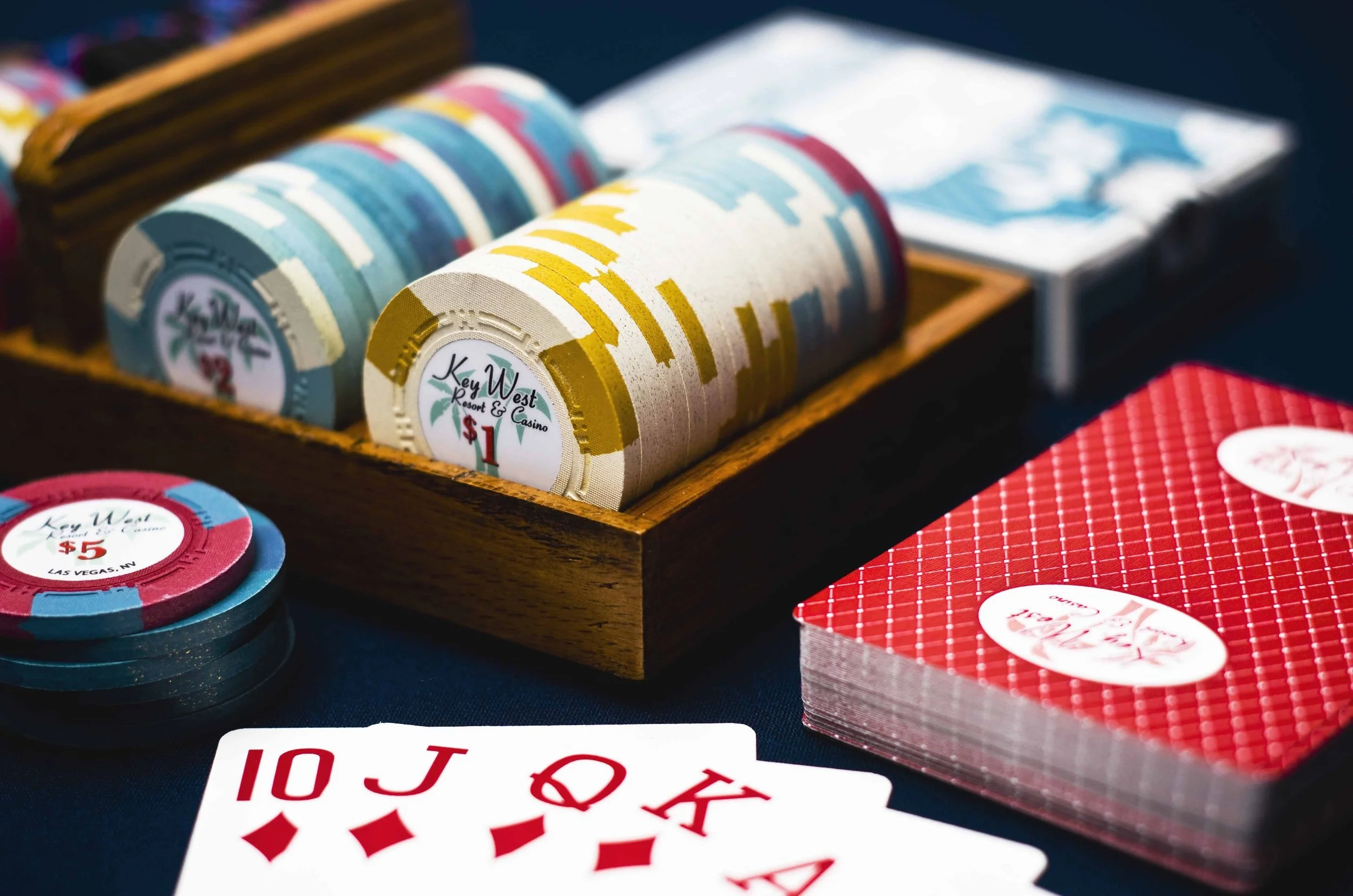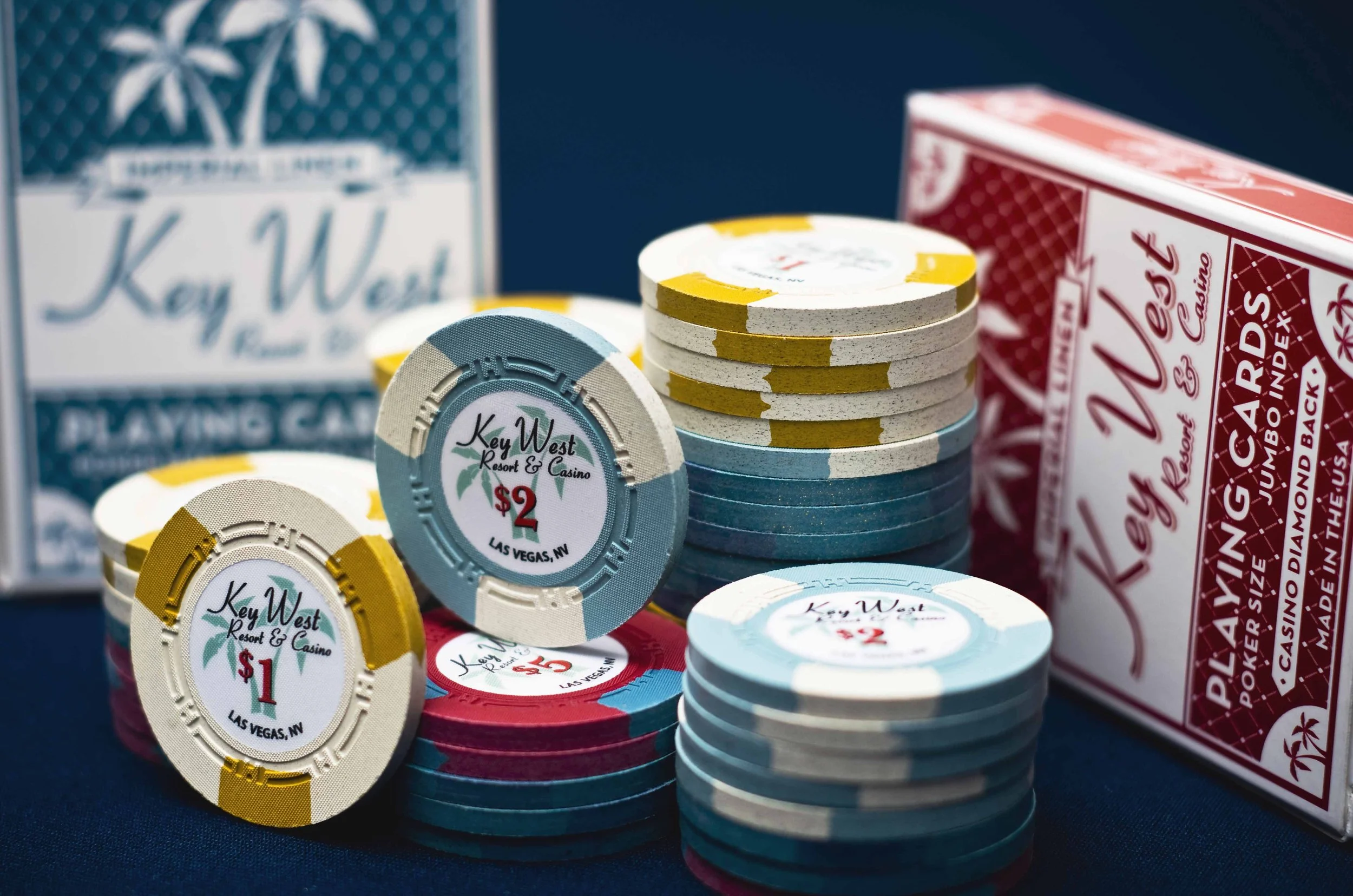Let's Talk About Poker Chips #2: Key West Resort & Casino Poker Chips
Going high end has its advantages (and disadvantages); a look at Key West Resort & Casino Poker Chips
Last time I wrote about poker chips, I discussed the different types on offer, but I mainly skipped any sort of information on high end pieces, frankly because I didn't have much experience handling them. That is until now.
Enter Key West Resort & Casino poker chips. A higher end option for those willing to splurge on a casino quality item.
What is a high-end poker chip anyhow? Well, obviously, what people consider high end can be subjective, and most would argue whatever large casinos use on their floors is the pinnacle of poker chips, but in general most afficionados would say that feel, uniformity and handling top the list of premium characteristics. I can see the case for it. Personally speaking, after handling casino-grade poker chips there is a clear demarcation of quality compared to the ABS slabs offered in Iron Clays or Board Game Geek—and a gulf between the dice or suited chips you find in big box stores.
However, in saying all this, the biggest “con” about a premium poker chip is of course, price. The most I can say to this is, expect to pay. That said, if you're coming from a strictly Euro board game perspective (and not an 18xx one), making a set can be achieved if you happen to have a modest budget for it.
What’s in a chip?
It’s clear, once you hold these bits of compressed clay composite, casino-quality poker chips stand above most offerings from online sellers or big box stores. There is no question there is a discrepancy. Coming from Roxley Iron Clay counters, or the Board Game Geek poker chips, the look and feel of Key West chips is significantly different, and better to ABS chips in a lot of ways—ways that cater more to my use case and “quality of life” scenarios when using these to play Euro board games. There are three reasons why.
The first is build quality. These specific chips are constructed of a clay composite material, somewhat similar to what casino-grade chips are made of. Now, to be fair, the make up can be tricky to actually identify. For one, the manufacturer, Classic Poker Chips (Key West Resort & Casino orders its chips from CPC) holds the recipe as a close guarded trade secret. They’re the only ones who know how much of one ingredient over another is mixed for their formula. Why is that? Well, they happen to be the only U.S. made poker chip manufacturer left in the country. Since most casinos specifically use CPC as their poker chip source, they must hold that information secret to avoid any shenanigans with counterfeit poker chips infiltrating casino floors. What we do know, at least in regards to Key West chips, is that including the clay composite base, they add brass dust to increase the weight of the chip ever so slightly. The outcome of this is chip-to-chip consistency; these come in at around 9 grams per chip. But it doesn’t stop there. Build quality is outstanding, mostly because there is a level of uniformity created by the materials used above. Each chip has sharp edges, consistent level faces that ease stacking, and textured surfaces that aid in handling. In other words, everything mentioned above is solely focused on improving how you handle and manipulate these chips on the table and in hand. And to say it’s not a huge improvement over Iron Clays or BGG poker chips would be disingenuous.
Second, it’s the denominations available. One huge glaring issue and omission when using Iron Clays and BGG chips is that, for the most part, the denominations available between those two offerings can be a bit problematic. Not problematic enough to render the chips useless, but enough to increase the fiddly-ness of currency exchanges in board games. Let’s use an example—if we wanted to exchange five $1s to a single $5 chip, we’d need five $1 chips to do so. Pretty simple, but now multiply that by 4 players each clanging and swapping chips left and right after every turn. At its zenith, the quantity needed of $1s for those four players to swap out for a $5 is twenty $1 chips (and to comfortably have the capacity to do so). It's a lot of trading back and forth. It can get annoying, and worse yet, you'd be spread thin if players needed more granular amounts. A simpler accommodation would be the introduction of a $2 chip. Now, same exchange scenario as above, you'd only need two $2 chips and one $1 chip to exchange for a $5. Bravo! You've just reduced your chip inventory by 40%. Three chips does the work of five, and there is less clutter and stacking needed to give exact change.
The other benefit of a $2 chip is that most board games have a small denominational economy running. It's lots of $1, $2, $3 and $5s with a smattering of larger amounts thrown in there, but the bulk is small coin currency. Iron Clays and BGG’s chips skip the $2 and $3 chip entirely. These Key West set have a $2 version that dovetails nicely with board game currency exchanges. I thought about it and digging a little in my favorite board games with currency, there were lots of $1 and $2s and some $3s and $5s, but very rarely large denominations. Which makes sense; after all most Euros are economically tight affairs. You are meant to feel the scarcity, the anxiousness of not meeting quotas for your potential moves. The cardboard money that comes with the game should reflect that, and it’s why having a $2 chip really helps in keeping with that frugal underpin of game design.
Lastly, the third reason why these chips are pretty darn good is readability. I will confess, the color scheme of these chips compared to Iron Clays is definitely loud. Where as Iron Clays forgo accented colors and instead dip their palate in muted hues, Key West Resort & Casino goes in traditional expressive colors. Are they the pompous garish versions of other casino chips? In my opinion, no. They have a classy, calmer color scheme here, as if they turned down the saturation filter to modest levels.
Sure, their color scheme might stick out amongst a very beige looking Euro, a peacock in the middle of o flock of turtle doves, but when considering that board games these days are more colorful and the artists aren’t afraid of experimenting with a wide scope of hues, they actually fit right in without looking too much out of place. Again, your sensibilities might differ here.
What’s it gonna cost?
There is no way around it; these chips are expensive. At current prices (May 2025) each chip will run about $2.66 a piece-yes, a piece. Meaning, a 50-chip set will go well over $100, not including shipping, not including a rack. You could get a set of 200 Iron Clays for far less with a nice box and chip holder included—never mind the countless other games you can purchase for equal amounts of money.
So, who is this actually for? Well, the answers here can be far and wide, but I’ll try to narrow it down to a few candidates. Let me start by saying who it’s not for. If you like to bling out your board games, but don’t need the best, well, this is obviously overkill. I couldn’t justify recommending these chips at their price point because these are, for lack of a better word, an accessory. A very nice accessory, but just an accessory at the end of the day. A set of Iron Clays would do just fine at a fraction of the cost. If you prefer having more games, spending $100+ on a set of these will divert funds from growing your game library. Not worth it. And of course, if your funds for board games are limited, these are needlessly outside your budget and it’s best to use your funds to fund games, not accessories.
Okay, so then who would these be for?
The obvious one is, if you have money to burn—by all means, splurge. These are a great alternative to what’s currently out there, be it from within the board game industry and those that cater to home poker games. The quality here is top notch.
The other type of person I would maybe suggest these would be those still looking for a good alternative to paper money and want a one-and-done approach to building a set. The problem with buying an established set from Roxley or BBG is that there is no way to adjust the quantities of one denomination over another. You get what you get. If, however, you are willing to spend the money on one set to rule them all, then having complete control over which denomination has more over another, or better yet, omit an unnecessary one, might be worth the price of admission. Afterall, you have perfect information regarding the currency quantities in your board game library. You have inside knowledge on what you actually need to fill the bank, and maybe even adjust it to make a better currency spread a game might have.
Read ‘EM and Weep
Hopefully this is a small info dump to better help you understand the difference between a respectable ABS poker chip and what one of the best poker chip manufacturers left in the country can offer. Sure, it is a massive price jump in what you can get from Roxley, BGG and online poker chip retailers. However, these poker chips are a worthwhile investment should you have some money to splurge. Are they necessary? Absolutely not…but, I would say sometimes the wants outweigh the needs in certain situations. While I would never say you need these chips in particular, should you ever want some type of posh accoutrement elevating the textural nature of your gaming sessions, I would point to Key West Resort & Casino chips as a source of inspiration.










